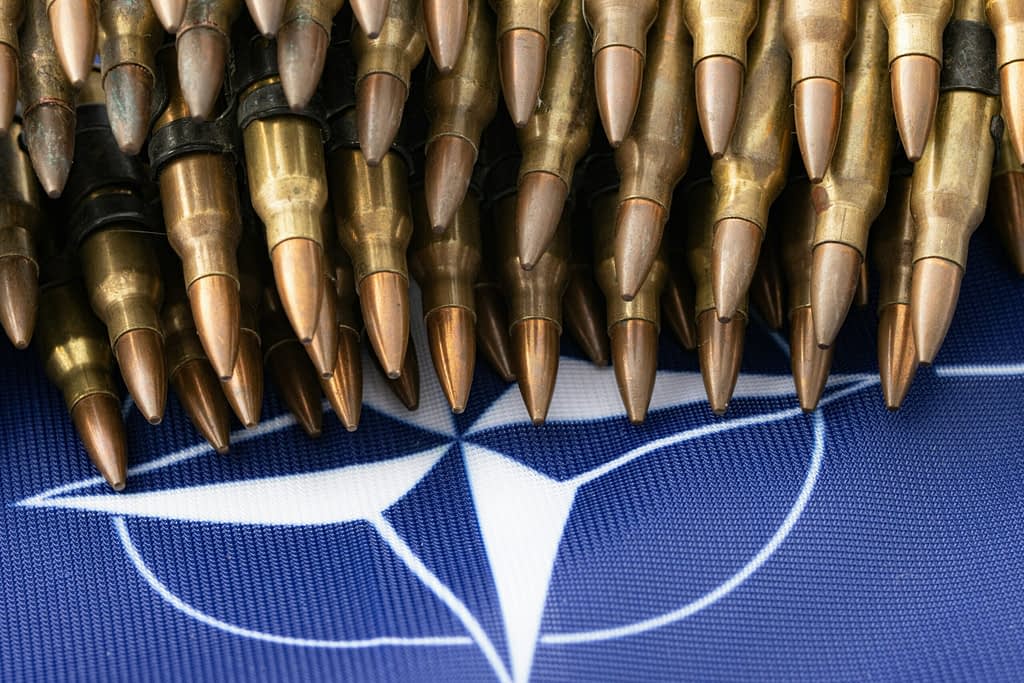The North Atlantic Alliance has approved a groundbreaking increase in defense spending to 5% of gross domestic product by 2035, representing the most ambitious defense target in NATO’s history. The new defense spending requirements nearly triple the existing 2% GDP commitment and place Europe’s largest economy facing a significant budgetary challenge in military funding.
New NATO Defense Standard: How the 5% GDP Requirement Works
The new NATO requirements divide the 5% GDP between two key areas. Member states will need to allocate 3.5% of gross domestic product to classical defense spending including military equipment, personnel, and operations. The remaining 1.5% GDP will go toward security infrastructure including cyber capabilities, intelligence, and related technologies.
The decision emerged from weekend negotiations among NATO ambassadors who approved a compromise text under pressure from Washington. President Donald Trump has long demanded that allies bear a greater share of responsibility for transatlantic security.
Current Reality of Member States’ Defense Budgets
Current NATO data reveals significant differences in military investments among member states:
- Defense spending leaders: Poland, Estonia, United States, Latvia, and Greece significantly exceed the 2% standard
- Lagging economies: Canada, Spain, and Italy fail to meet even the basic 2% target
- Positive trend: From just 6 countries meeting the 2% requirement in 2018, the number rose to 23 states
- No country currently reaches the planned 5% GDP defense spending
The geographical distribution of military investments creates tensions within the alliance. Eastern European states like Poland and Estonia, nervous about Russian aggression in Ukraine, are already planning to reach the 5% target in the coming years.
German Defense Spending: Financial Reality for Europe’s Largest Economy
Germany currently spends approximately 2% of GDP on defense, representing more than 90 billion euros annually according to NATO estimates. Increasing German defense spending to 5% would mean additional tens of billions of euros each year, with each percentage point of GDP corresponding to approximately 45 billion euros according to data from Chancellor Friedrich Merz.
Hubertus Bardt from the economic institute IW Köln points out that such an increase will likely be financed through loans. “Despite this, such an increase will lead to significant budgetary conflicts in the country’s annual budget,” the expert explains.
The German government recently adjusted its debt brake so that defense expenditures above a certain threshold are exempt from state debt limitations. Berlin also approved a special infrastructure fund worth 500 billion euros.
Budgetary Challenges: How Germany Can Finance Higher Defense Spending
Financing higher defense spending in Germany presents several fundamental problems:
- Budget reforms: Need for substantial changes in public finance structure
- Tax adjustments: Likely tax increases to cover additional costs
- Debt burden: Increased borrowing will lead to higher interest costs
- EU rules: Possible conflicts with European debt limits
Jens Boysen-Hogrefe from the Kiel Institute for the World Economy warns: “Medium-term, the 5% spending target can be met with certain challenges, but long-term it would require substantial reform of public budgets.”
Political Resistance and Practical Obstacles
Some allies have already expressed skepticism toward the new target. Spanish Prime Minister Pedro Sánchez called the requirement “unreasonable and counterproductive,” while Italian Defense Minister Guido Crosetto questioned the alliance’s relevance in its current form.
Even supporting countries like Germany and Britain may struggle to reach the 5% threshold due to domestic economic pressures. Britain reportedly requested a three-year delay in implementation.
Experts agree that achieving 5% defense spending relative to GDP will be a historically high figure requiring sufficient time and political will. The success of the German defense budget will also depend on whether the 1.5% dedicated to broader security matters represents genuinely new costs or a relabeling of existing defense spending.




